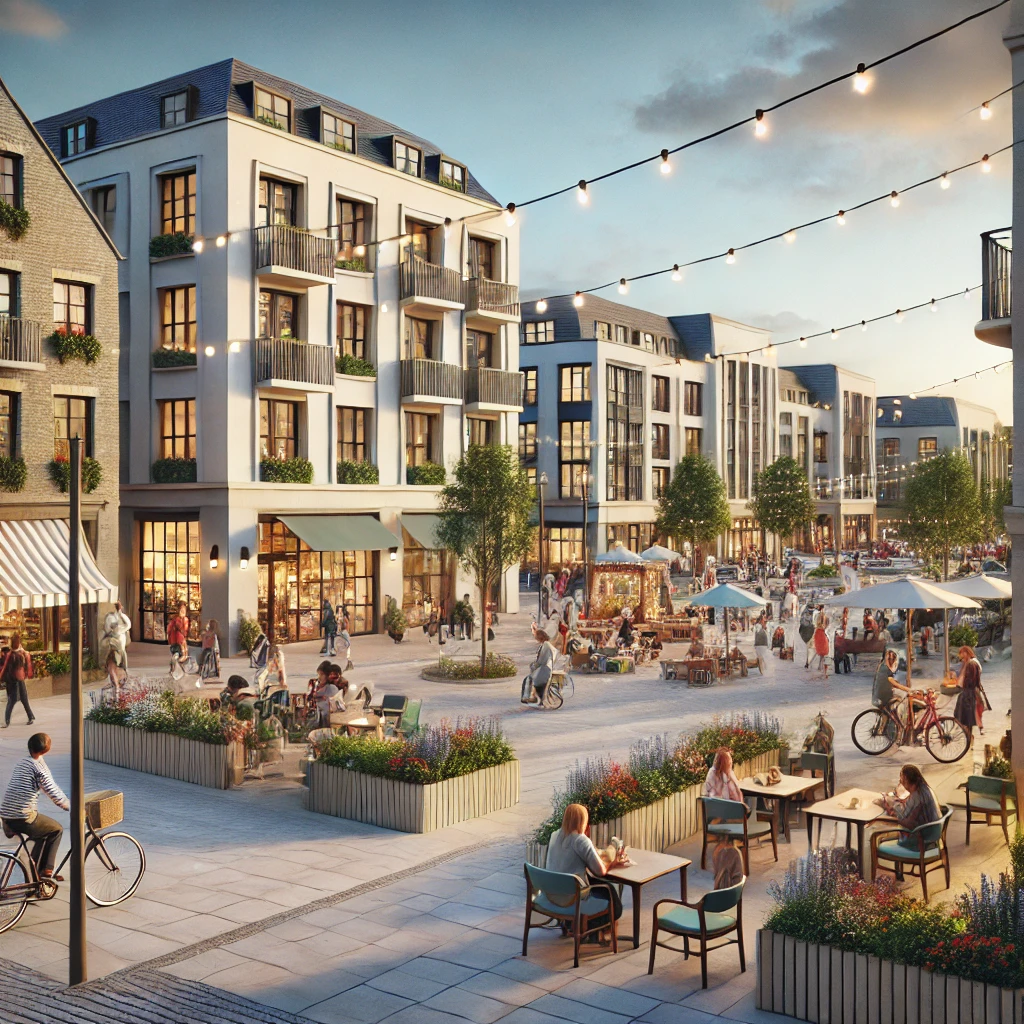In today’s rapidly evolving urban landscapes, mixed-use developments have emerged as a cornerstone of modern city planning and real estate development. These integrated spaces, which combine residential, commercial, and recreational elements, are redefining how people live, work, and play in cities across the globe. As urbanization accelerates and cities face increasing challenges around density, sustainability, and quality of life, mixed-use developments are proving to be both a practical solution and a powerful driver of urban growth.
What Are Mixed-Use Developments?
At their core, mixed-use developments combine two or more types of real estate uses—such as residential, office, retail, hospitality, and recreational spaces—within a single project or neighborhood. These developments emphasize functionality and connectivity, allowing people to seamlessly transition between activities in one unified space.
Common types of mixed-use developments include:
- Vertical Mixed-Use: High-rise buildings with retail at the ground floor, office spaces in the middle, and residential or hospitality units above.
- Horizontal Mixed-Use: Low-rise or spread-out projects that combine various uses across an integrated campus or district.
- Transit-Oriented Developments (TODs): Projects strategically built near public transportation hubs, promoting mobility and sustainability.
1. Meeting the Demand for Walkable Communities
Today’s urban residents value convenience and connectivity. Mixed-use developments create walkable neighborhoodswhere residents can access retail shops, offices, parks, restaurants, and even healthcare facilities without the need for cars. This concept not only reduces traffic congestion but also enhances quality of life.
- Stat: According to a report by the Urban Land Institute (ULI), properties in walkable urban areas command a 75% price premium compared to car-dependent suburban properties.
2. Maximizing Land Use Efficiency
In cities where space is limited, mixed-use projects allow developers to maximize the potential of every square foot. By layering different uses in a single space (e.g., retail on the lower floors, residential above), these projects generate higher returns and create more vibrant spaces.
3. Supporting Sustainability Goals
Sustainability is at the forefront of modern urban planning, and mixed-use developments inherently align with environmental goals:
- Reduced Emissions: By promoting walkability and proximity to public transit, these projects help cut vehicle emissions.
- Resource Sharing: Integrated infrastructure reduces energy consumption and water usage across different asset classes.
- Green Design: Many modern mixed-use developments prioritize LEED-certified designs, green roofs, and renewable energy sources.
4. Enhancing Community and Economic Vitality
Mixed-use developments foster vibrant urban communities by encouraging social interaction and economic activity. By bringing together residential, commercial, and cultural spaces, these projects create hubs of activity that drive foot traffic and economic growth.
- Local Businesses Thrive: Retail and dining spaces in mixed-use developments benefit from a built-in customer base of residents and office workers.
- Cultural Integration: Many developments include public spaces, art installations, and community events that foster local culture and pride.
5. Diversifying Revenue Streams for Developers
For developers and investors, mixed-use projects offer a unique advantage: diversified income streams. With multiple asset classes (residential, retail, office), developers can hedge against market volatility. If one segment underperforms, others may remain profitable, reducing overall risk.
- Trend: Post-pandemic, the demand for flexible spaces (e.g., co-living, co-working, and retail-experience hubs) is fueling mixed-use development growth.
Trends Driving the Rise of Mixed-Use Developments
1. The 15-Minute City
A growing trend in urban design, the “15-Minute City” concept envisions neighborhoods where all essential services (work, schools, healthcare, recreation) are accessible within a 15-minute walk or bike ride. Mixed-use developments are the building blocks of this vision.
2. Technology and Smart Buildings
Modern mixed-use spaces integrate smart technology to enhance efficiency and user experience. Examples include:
- IoT-enabled systems for energy and lighting management.
- Smart parking solutions to optimize space use.
- App-based tenant services for residential and commercial users.
3. Adaptive Reuse and Revitalization
Cities are transforming old warehouses, malls, and industrial buildings into mixed-use hubs. Adaptive reuse not only preserves historic architecture but also reduces the environmental impact of new construction.
The Challenges of Mixed-Use Development
While mixed-use projects offer immense opportunities, they are not without challenges:
- Zoning and Regulatory Hurdles: Integrating multiple asset classes often requires navigating complex zoning laws.
- Financing Complexity: Mixed-use developments often require creative financing due to their scale and multi-phase nature.
- Balancing Stakeholder Needs: Managing diverse tenants, residents, and investors requires exceptional project management skills.
Building the Future of Urban Living
Mixed-use developments are at the heart of modern city growth, offering innovative solutions to urban challenges. They create walkable, sustainable, and economically vibrant spaces that meet the evolving needs of city dwellers, businesses, and investors alike. By maximizing land use, supporting sustainability, and fostering community, these developments are not only redefining urban living but also paving the way for the cities of tomorrow.
Ready to Lead the Next Great Urban Development?
Learn more about how expert project management can transform mixed-use visions into thriving communities. Reach out today to discover how we can bring your next mixed-use project to life!


